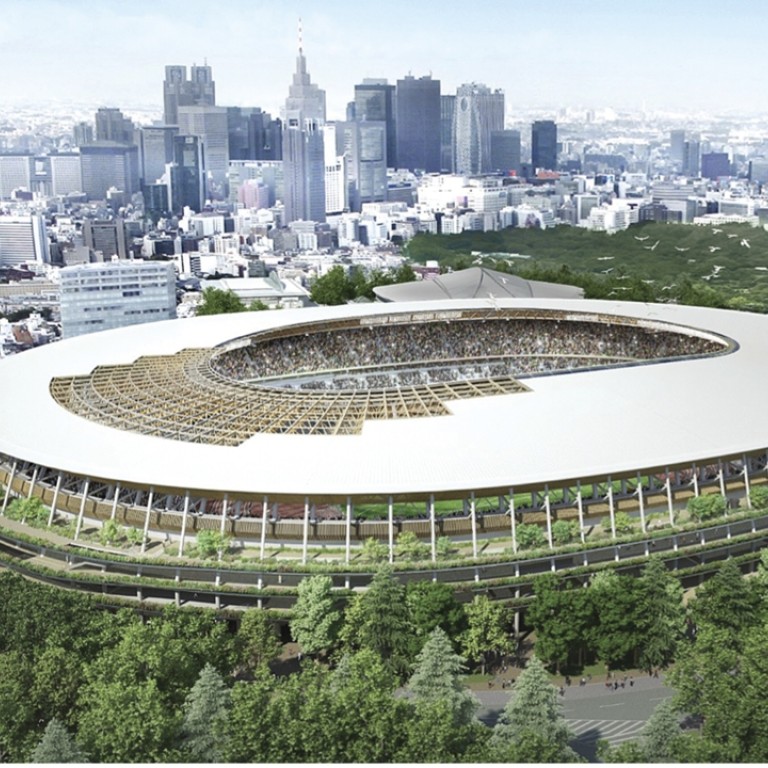
Critics slam Japan’s shortlisted Olympic stadium designs
The two short-listed designs for the new national stadium that will serve as the centre-piece of the 2020 Tokyo Olympic and Paralympic Games have been lambasted as “boring,” while the winner of the original competition has been “shafted” and her vision “replaced by mediocre Japanese designs.”
The Japan Sport Council unveiled on Monday the two proposals for the national stadium, with a decision on the winning design to be announced before the end of December.
Riccardo Tossani, an Italian-Australian architect who has had a practice in Tokyo for more than two decades, said, “While the designs put forward by Zaha Hadid were of the 21st century and moving into the 22nd century, these two stadiums are of he 20th century regressing to the 19th century.

Hadid’s design “captured all the qualities of Tokyo that architects and residents of this city find so timeless, breath-taking and appropriate,” he said.
“But these new projects pander to a nationalistic, juvenile view of what the politicians consider to be the Japanese vernacular,” he said.
The names of the architects behind each of the new designs have not been revealed, but the stadium that incorporates the trees in the grounds of nearby Jingu Shrine is believed to have been submitted by Kengo Kuma. Horizontal lines on the facade are reportedly reminiscent of the wooden pagoda at Horyuji Temple, which dates from the early sixth century.

The design has already been unkindly described as being reminiscent of a hamburger.
The alternative design is apparently the work of Toyo Ito and incorporates an undulating roof and 72 wooden pillars on the exterior that will bear the weight of the upper structure and hark back to the pillars used in traditional Japanese buildings.
Tossani says that use of wood, particularly in a structure this large, is “ridiculous” because of the constant – and costly – maintenance that will be required to ensure it remains safe.
“It’s an enormous liability,” he added.

“These are little more than diagrams dressed in wood and they are a tremendous disservice to generations of architects working in Japan who will be forced to recognise that it is business as usual in Japan and that high-end opportunities are being reserved for Japanese designers only.
“Zaha Hadid has figuratively been shafted and her vision has been replaced by mediocre Japanese designs,” he said.
The two new proposals have been estimated at ¥149 billion(HK$9.56 billion) and ¥149.7 billion , within the budget of ¥155 billion) set by Tokyo. It was also significantly lower than the ¥250 billionthat would have been required for the stadium that was announced in November 2012 as the winner of an international design competition.
“Zaha Hadid did exactly what was asked of her,” said Tossani. “She came up with a tremendous design with all the functional qualities – and more – that outshine these compromise designs.”
Japanese architects “denigrated and criticised the design probably for their own personal interests and it appears they have been vindicated in that action by getting the government to order a new stadium plan,” Tossani said. “It’s extremely poor form.”
At the time it was selected as the winner of the competition, the 80,000-seat design by London-based Zaha Hadid Architects was praised for its “dynamism” and a “futuristic design [that] embodies the messages Japan would like to convey to the rest of the world.”
Tadao Ando, the renown Japanese architect who chaired the selection panel, said, “I believe this stadium will become a shrine for world sport for the next 100 years.”
No sooner had Hadid’s design been announced as the winner, however, than the sniping began.

Japanese architects claimed that the 70-metre-high stadium would be too large for the site and that it would be “out of keeping” with the surrounding cityscape. There were accusations that the space-age roof resembled a cycling helmet and that it would be difficult to evacuate in the event of an earthquake.
A year after the winning design was announced, the Japan Sports Council announced that it would dramatically scale back the project, reducing the floor space by one-quarter and scrapping plans for a museum, commercial facilities and alterations to access routes.
That was not enough to silence the critics, however, who played on the stadium’s costs. In July, the JSC announced that it was cancelling the original competition and would hold a new round of bids, with a strict new cost limit.

